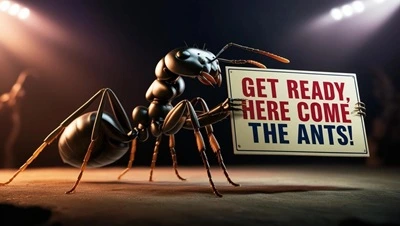Common Insecticide Formulations
Insecticides come in various forms and formulations - liquid, solid, dry, fumigants, and aerosols. Below is a summary describing the strengths and weaknesses of each, and guidance on when they should be used.Liquid Formulations
- EC (Emulsifiable Concentrate): Contains an oil-based active ingredient mixed with an emulsifier, which allows it to mix with water. They are easy to mix, have good penetration and residual effect, and are fast acting. They can be harmful to plants, may have a strong odor, and carry a skin absorption risk.
- SC (Suspension Concentrate) / F (Flowable): Fine solid particles of active ingredient suspended in liquid (water-based). Low odor and low toxicity, good residual activity and carry less risk of damage to plants. They require frequent tank agitation to prevent settling.
- CS (Capsule Suspension) / Microencapsulated (ME): Active ingredient is enclosed in tiny capsules, which release the chemical slowly over time. Long-lasting residual, reduced odor and skin absorption risk. Good for pests requiring long-term control. Slower knockdown compared to ECs.
- ULV (Ultra-Low Volume) / LV (Low Volume): Highly concentrated formulation applied at extremely low volumes using fogging or misting. Covers large areas with minimal product, ideal for mosquito and vector control. No residual effect, requires specialized application equipment.
- ME (Microemulsion): Water-based formulation with very fine oil droplets, forming a stable emulsion. No need for frequent agitation, less harmful to plants than EC. Can be expensive.
- SE (Suspo-Emulsion): A combination of SC and EC—solid particles and emulsified liquid in the same formulation. Offers both residual and quick knockdown and better adherence to surfaces. Requires agitation before use.
- WP (Wettable Powder): Dry powder that must be mixed with water to form a suspension. Long residual, highly effective on porous surfaces like wood or concrete. Can clog sprayers and requires constant agitation.
- WDG (Water-Dispersible Granules) / DF (Dry Flowable): Granular form that dissolves in water to form a suspension. Easier to mix than WP, reduced inhalation risk. Requires agitation.
- WSG (Water-Soluble Granules) / SP (Soluble Powder): Granules or powders that dissolve completely in water, leaving no residue. No need for agitation, no visible residue. Shorter residual effect.
- DG (Dispersible Granules): Similar to WDG but designed to be applied as dry granules instead of being mixed with water. Easy to apply, low drift risk.
- G (Granules): Solid particles impregnated with an active ingredient, designed for broadcast application. Long-lasting residual, no mixing required. Slow to act.
- B (Baits) (Gel Baits, Granular Baits, Liquid Baits, etc.): Formulated to attract and poison pests, often containing insect growth regulators (IGRs). Targeted application, effective for social insects (ants, roaches). Can take time to work.
- D (Dusts): Fine powder formulation that works by contact or ingestion. Excellent for cracks and crevices, long residual effect. Easily displaced by air movement
- P (Pellets): Compressed solid form, often used for rodent control or slow-release insecticides. Long-lasting, easy application. Not suitable for all pests.
- Fumigants: Gaseous pesticides used for total pest elimination in enclosed areas. Complete eradication of pests, penetrates cracks and voids. Highly toxic, requires special licensing.
- AE (Aerosols) / PT (Pressurized Treatment): Ready-to-use pressurized sprays. Easy to apply and fast-acting. Short residual effect


Share "Common Insecticide Formulations" on social media